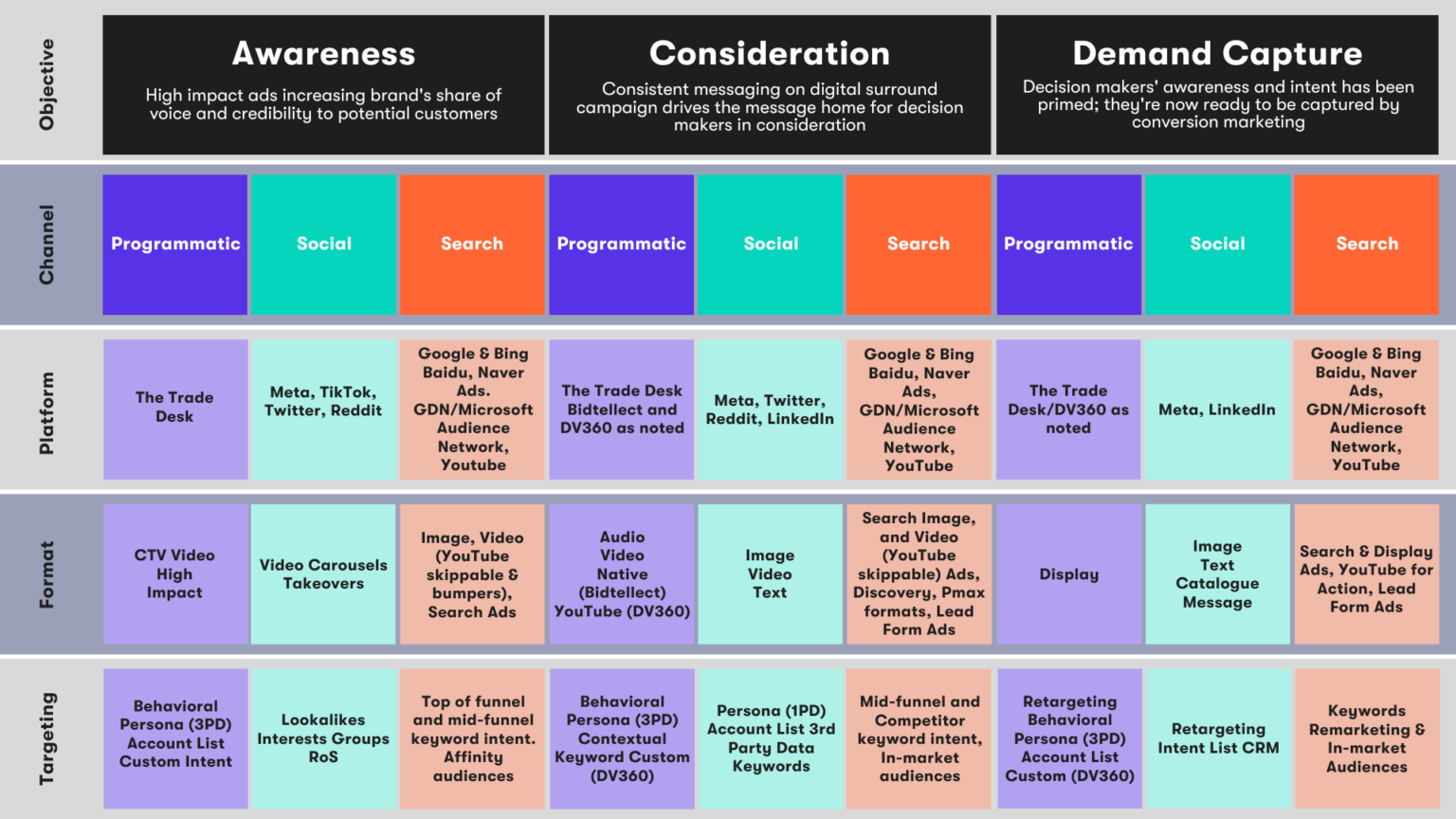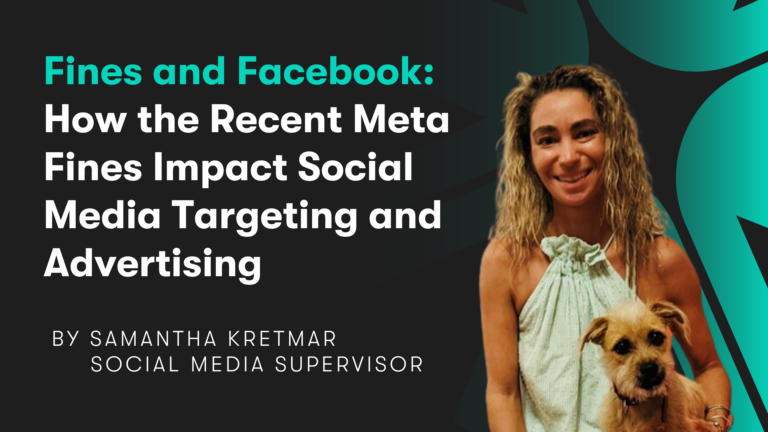Decision makers buy based on the content they view across multiple channels. Adopt an omnichannel approach and get a bigger slice of their budget
By Tess Luhmann, Manager of Paid Social
Contributors: Julia Muller, Associate Director of Search, Rosey Sutton, Associate Director of Programmatic, and Anthony Lopez, Supervisor of Programmatic
Omnichannel at every step of the media lifecycle
An omnichannel marketing approach leverages and balances all channels, platforms and devices. As decision-makers consume media content from multiple channels, omnichannel marketing is key if B2B marketers want to maximize reach and advertising efficiency.
The perfect omnichannel mix
To understand how channels work together, we need to acknowledge their unique components, strengths and weaknesses.
Programmatic
Excellent for upper- and mid-funnel goals, as it tees up the audience for conversion in other channels.
Social
Built for reaching and engaging audiences at all levels of the funnel.
Search
Shows key in-market intent, and unlike Programmatic and Social, is not a disruptive advertising channel.
This is how these channels flow together to reach audiences across all levels of the funnel:

When a strategy includes all channels, it’s maximizing the effectiveness of your digital media. Omitting any of them reduces your Share of Voice, and inhibits a full-funnel strategy.
Collaborative optimizations
When all channels are activated, solutions and insights can be applied elsewhere to drive optimization:
- Share and target the same 3rd party data segments between Programmatic and Social platforms to surround an audience.
- Apply Search keywords to Programmatic and Social placements so ads appear in contextually relevant environments.
- Hack: Search keywords are excellent for building Social interest-based audiences.
- Use site tagging to generate audience pools driven by other channels for retargeting.
- Leverage the same audience pools as seed audiences for lookalike modeling.
- Test creative elements and messages across channels to gain contextual audience insights.
- Retarget Search lists in Social and Programmatic to drive frequency with various formats and promotions.
- Analyze Programmatic performance by publishers to extract affinity interests for Social and Search targeting.
- Implement Programmatic-curated preferred and block site lists to Search & Social audience networks.
- Discover your customer needs with Social listening and community management, and apply responsive messaging across all channel advertising.
Demonstrating the omnichannel approach’s impact in reporting
Once all channels are activated, and coordinated throughout the funnel, demonstrating their cohesion and ROI impact is pivotal. This can’t be done without multi-touch attribution (MTA), or tracking and evaluating all the touchpoints exposed along the customer journey.
However, many channel platforms don’t share their data and attribution, and when they do, synthesizing the data into MTA frameworks is taxing.
Despite this, we can help you make inroads on cross-channel attribution:
- Use channel-independent tracking (Urchin Tag Management) to see all platforms contributing to your pipeline.
- Analyze view-through conversion performance with different attribution windows to collect influence of exposure.
- Integrate any channel conversion APIs into a central data source to aggregate channel data.
- Deploy dedicated digital analytics solutions like Adobe or Google Analytics (GA4).
- Map respective platform UTMs to illustrate each channel’s role in the customer journey using The Trade Desk’s Path to Conversion Reports to gauge programmatic effectiveness.
- Utilize 3rd Party Data sources, like Bombora and DemandBase, to define targetable audiences based on intent, and track their advertising exposure.
- Use site analysis tools to analyze channel UTM traffic, like LinkedIn Website Demographics and Audience Insights.
To summarize...
Different channels have different strengths that make them optimized to various levels of the funnel.
Omitting a channel amounts to omitting sections of your marketing funnel.
When working synergistically in a single media plan, channels can share insights for optimizing respective campaigns.
Omnichannel reporting evaluates all media contributions towards actual ROI, so you can tell the full story of your marketing investment.
Omnichannel marketing is key to spending your marketing budget efficiently. It optimizes reach, frequency, SOV and contributes an incremental lift to funnel KPIs. Moreover, omnichannel is a collaborative approach to digital marketing, extending beyond just media planning into optimizations and reporting.
To find out how your marketing strategy can benefit from an omnichannel approach just drop us a line and one of our team will be in touch.

Just Global Social Media Supervisor, Samantha Kretmar, explains the impact of recent Meta fines.

Just Global Social Media Supervisor, Samantha Kretmar, explains the impact of recent Meta fines.

Just Global’s Emilie Lee and Ritesh Patel sit down with B2B Marketing to discuss how to adopt an integrated measurement strategy.
